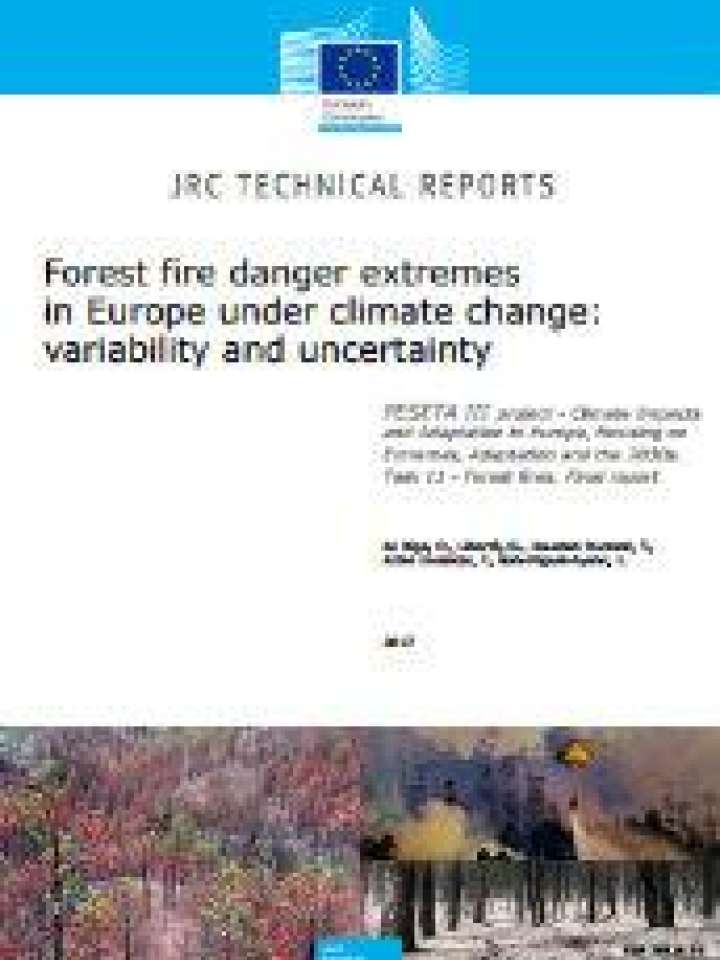Forest fire danger extremes in Europe under climate change: variability and uncertainty
This paper aims to improve the understanding of the direct influence of weather and climate on fire danger across Europe. For climate analysis at the continental scale, a daily high-emission scenario (RCP 8.5) was considered up to the end of the century, and a mitigation scenario that limits global warming to 2 °C was also assessed.
To estimate fire danger, the Canadian Fire Weather Index (FWI) system was used. FWI provides a uniform numerical rating of relative fire potential, by combining the information from daily local temperature, wind speed, relative humidity, and precipitation values. The FWI is standardised to consider a reference fuel behaviour irrespective of other factors. It is thus well suited to support harmonised comparisons, to highlight the role of the varying climate in the component of fire danger that is driven by weather.
Results
Around the Mediterranean region, climate change will reduce fuel moisture levels from present values, increasing the weather-driven danger of forest fires. Furthermore, areas exhibiting low moisture will extend further northwards from the Mediterranean, and the current area of high fuel moisture surrounding the Alps will decrease in size. Projected declines in moisture for Mediterranean countries are smaller with mitigation that limits global warming to 2 °C, but a worsening is still predicted compared with present. There is a clear north-south pattern of deep fuel moisture variability across Europe in both climate change scenarios. Areas at moderate danger from forest fires are pushed north to central Europe by climate change. Relatively little change is expected in weather-driven fire danger across northern Europe. However, mountain systems show a fast pace of change.
Adaptation options
Key strategies to be considered may include vegetation management to reduce the likelihood of severe fires, as well as fuel treatments to mitigate fire hazard in dry forests. These measures should be adapted to the different forest ecosystems and conditions. Limited, preliminary knowledge covers specific but essential aspects. Evidence suggests that some areas protected for biodiversity conservation may be affected less by forest fires than unprotected areas, despite containing more combustible material. Specific typologies of old-growth forests may be associated with lower fire severity than densely stocked even-aged young stands, and some tree plantations might be more subject to severe fire compared with multi-aged forests. Particular ecosystems and vegetation associations may be better adapted for post-fire recovery, as long as the interval between fires is not too short. Therefore, deepening the understanding of resistance, resilience and habitat suitability of mixtures of forest tree species is recommended. Human activity (accidental, negligent or deliberate) is one of the most common causes of fire. For this reason, the main causes of fire should be minimized, which includes analysing the social and economic factors that lead people to start fires, increasing awareness of the danger, encouraging good behaviour and sanctioning offenders.
Limitations
Bias correction of climate projections is known to be a potential noticeable source of uncertainty in the predicted bioclimatic anomalies to which vegetation is sensitive. In particular, the analysis of fire danger under climate change scenarios may be critically affected by climatic modelling uncertainty. This work did not explicitly model adaptation scenarios for forest fire danger because ecosystem resilience to fire is uneven and its assessment relies on factors that are difficult to model numerically. Furthermore, a component of the proposed climate-based characterization of future wildfire potential impacts may be linked to the current distribution of population, land cover and use in Europe. The future distribution of these factors is likely to be different from now.
Explore further
